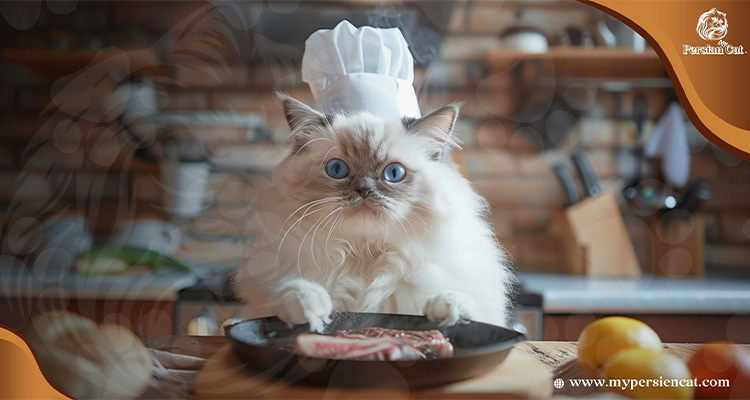Introduction
If you’ve ever watched your Persian cat sniff store-bought food and walk away like royalty rejecting a feast, you’re not alone. After raising Persians for years, I’ve found that making Persian cat food at home isn’t just more
affordable—it’s healthier, fresher, and honestly, a lot more fun. You control the ingredients, the texture, and the love that goes into each bite. There’s a special kind of peace in knowing exactly what’s in your cat’s bowl—especially when store shelves feel hit or miss.
If you’ve been wondering how to make Persian cat food at home, you’re in the right place—let’s dive into the simple joy of feeding our cats better.
What Persian Cats Need in Their Diet
Persian cats are sweet, soft, and a little picky when it comes to food. Their bodies need good care, and that starts with what goes in their bowl. When I began making Persian cat food at home, I learned one thing fast: simple, clean meals work best.
Protein is the top need. Chicken thighs, turkey breast, or rabbit are great. These meats build strong muscles and help your cat stay active. I often make a mix like the ground chicken thigh with bone and organs recipe. It’s easy and full of good stuff.
Healthy fat is also key. It keeps their brain sharp and their coat thick and shiny. You can use a small amount of chicken skin or a little fish oil. Just don’t go overboard.
Cats don’t need much carb. But a small bit of carrot or sweet potato is okay. It helps with tummy health and adds flavor.
Persian cats often have slow tummies and tear stains. They also deal with hairballs. Adding essential nutrients that should be a part of your cat’s diet, like taurine and zinc, made a big change for mine. Their eyes got clear, and they stopped coughing up hair.
To make things easy, grab the best supplies to make homemade cat food. A food scale, blender, and freezer-safe containers will save time and keep food fresh. I use them every week.
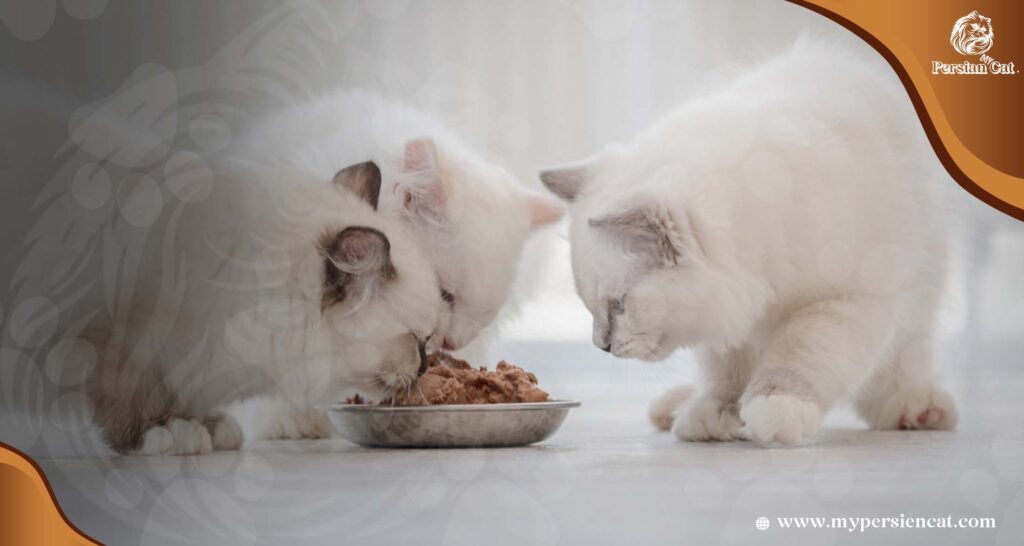
Cooked vs. Raw – Which Is Better?
When I started making Persian cat food at home, I wasn’t sure if I should cook the food or serve it raw. Both have pros and cons. I’ve tried both, and here’s what I learned.
Cooked food is a great start. It’s safe and easy to make. Just boil some chicken or turkey and add soft veggies like carrots or sweet potato. That’s it. A simple cooked meat recipe is perfect if you’re new to how to make homemade cat food. My cats did well on it, and I felt safe serving it.
Raw food is more natural. Cats in the wild eat raw meat, bones, and organs. Some people follow the prey model raw diet recipe. I tried this too. But it takes care and clean prep. You must use fresh meat and follow vet advice. I also tested a raw ground rabbit recipe, which my cats loved.
If you’re new, cooked may be best. It’s simple and easy on your cat’s tummy. Raw food can be great, but it needs more planning and care.
Both work well when done right. The best way is to see what your cat likes. Watch how they eat, move, and feel. That’s how I found what works for mine.
Vet-Approved Homemade Cat Food Recipes
Making Persian cat food at home is easier than you think. Start with fresh meat, add a little fat, and don’t forget the key nutrients. These are my favorite recipes—simple, safe, and vet-approved.
🍗 Chicken Thigh with Bone and Organs (Cooked or Raw)
This recipe is great for beginners. I use ground chicken thighs, liver, and a small amount of heart. You can cook it or serve it raw if your vet says it’s safe. It gives your cat protein, iron, and taurine—all things they need to stay strong.
Keyword used: ground chicken thigh with bone and organs recipe
🦃 Turkey Breast and Sweet Potato (Cooked)
This one works well for cats with soft tummies. Boil turkey breast and mash it with cooked sweet potato. That’s it. It’s simple, soft, and full of comfort. One of my Persians waits at the kitchen door when I make this.
Keyword used: turkey breast and sweet potato recipe
🐇 Raw Ground Rabbit Recipe
This is a lean and clean meal. I use raw ground rabbit and mix in a supplement. You can also add a few drops of fish oil. This mix helps the coat and is easy to digest. My shy cat loves this one.
Keywords used: raw ground rabbit recipe, home made cat food, cat food recipes
🤰 Homemade Food for Pregnant Cat
When my cat was pregnant, I made her soft, rich meals. I used chicken, egg yolk, and a spoon of pumpkin. I also added a calcium mix. She stayed strong, and the kittens were born healthy.
Keywords used: homemade food for pregnant cat, healthy cat food recipes that you can try at home
These homemade meals are full of love. You don’t need to be a chef—just care and cook with heart. Persian cat food at home is about trust, health, and joy in every bite.
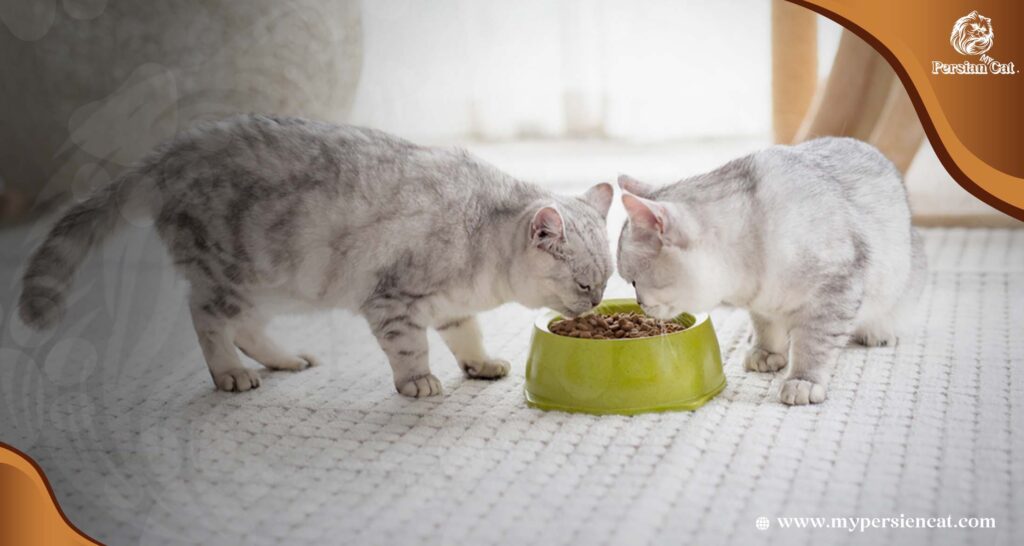
How to Assess Homemade Cat Food Recipes
Making Persian cat food at home feels great. But it must also be safe and full of what your cat needs. A nice smell and taste are not enough.
Start with balance. Each meal should have protein, fat, and a few carbs. It also needs taurine, calcium, and omega-3s. These are key parts of a full diet. I add them to every meal I make.
Use more than one meat. One day I cook chicken. Next time, I try rabbit or turkey. This gives more nutrients and keeps cats from getting bored.
Only use clean, fresh meat. Never add onion, garlic, or too much liver. These are not safe for cats. If unsure, check with your vet. I also use a guide on how to assess homemade cat food recipes. I keep it on my fridge.
Some meals need help. That’s why I use vet approved homemade cat food recipes. I also add a premix to fill the gaps. It’s an easy way to keep things safe and full of love.
Why You Should Use a Premix Supplement
When I first made Persian cat food at home, I felt proud. The meals were fresh and full of love. But something was off.
My cat’s coat got dull. One seemed low on energy. I asked my vet why. She said, “Are you adding a supplement?”
That hit me. I was not.
Homemade cat food is great, but it often lacks key parts. Cats need things like taurine, calcium, and vitamin B. These are essential nutrients that should be a part of your cat’s diet.
Meat alone does not cover it. Veggies don’t fix it either. That’s why we recommend using a premix supplement. It adds what the food may miss.
Now, I mix it in with every batch. It takes a second but brings real peace. I know the meals are safe and full of what my cats need.
Many vet approved homemade cat food recipes say the same. A premix helps your cat stay strong, happy, and full of life.
If you’re making Persian cat food at home, don’t skip the premix. It’s the best way to keep their bowl—and body—full of what counts.
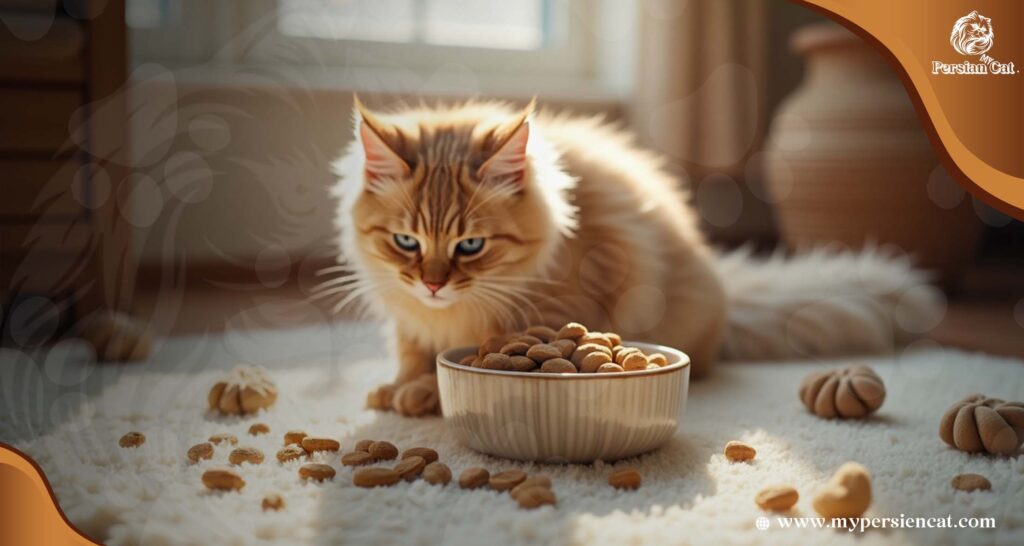
Tips for Feeding Persian Cats at Home
Feeding your Persian cat at home can feel like a small act of love. But it helps to start simple and smart.
Begin slow. If your cat eats store food, mix a spoon of homemade food into it. Do this for a few days. Then slowly add more. This gives their tummy time to adjust.
Know how much to feed. Most adult Persians need about 180–220 calories each day. That’s around 4–6 ounces of food. Some recipes, like the cooked meat recipe, are rich and fill them fast. Watch their weight and mood.
Stick to a plan. Feed your cat twice a day—once in the morning, once in the evening. Cats love a routine. It helps with mood and keeps their belly happy.
Keep food fresh. Store extra food in the fridge or freezer. Use clean, safe boxes. I make food once a week and freeze what I don’t use right away. It saves time and stress.
The best part of feeding Persian cat food at home? You know what’s in the bowl. Each meal is fresh, safe, and made with care. Your cat will feel it—and so will you.
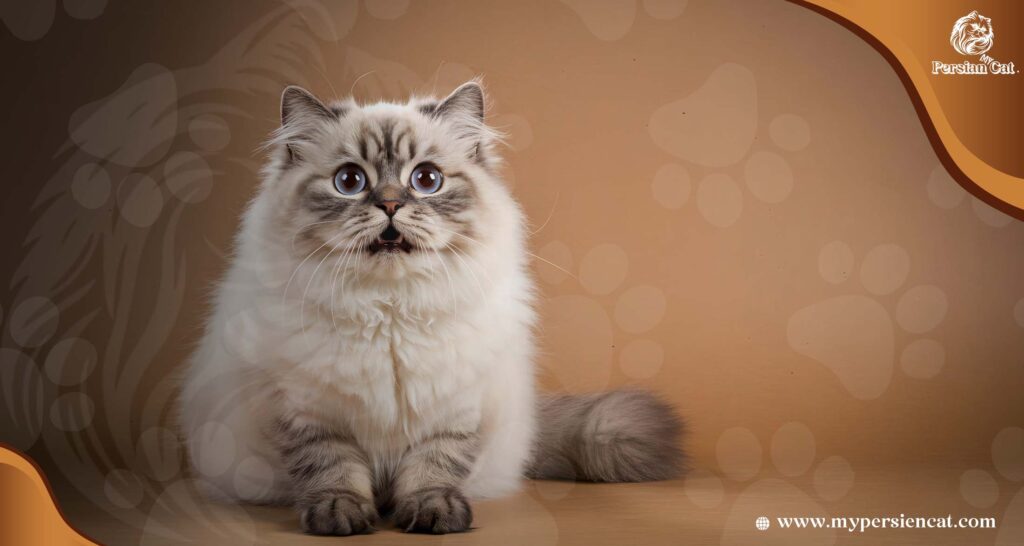
Final Thoughts & Quick FAQs
Making Persian cat food at home has been a joy. It’s simple, safe, and full of care. I know what goes into every bite. And my cats are happier and healthier.
Start small. Try one homemade cat food recipe. Watch how your cat feels. Some love cooked meat recipes. Others enjoy the raw ground rabbit recipe. Let your cat guide you.
Each meal is a gift. You skip the junk. You choose what’s best. That’s the real joy of homemade food for cats.
Quick FAQs
Q: How to make cat food?
Use fresh meat. Add some fat and soft veggies. Mix in a vet-safe premix.
Q: What’s an easy cat food recipe?
Try the ground chicken thigh with bone and organs recipe. It’s simple and rich.
Q: Is it safe to feed Persian cats at home?
Yes, with care. Use clean meat. Add the essential nutrients that should be a part of your cat’s diet.
Q: Can I cook in bulk?
Yes! I cook once a week. Then I freeze the meals. It saves time.
Q: How do I start?
Try one recipe. Mix it with store food. Go slow. Let your cat adjust.
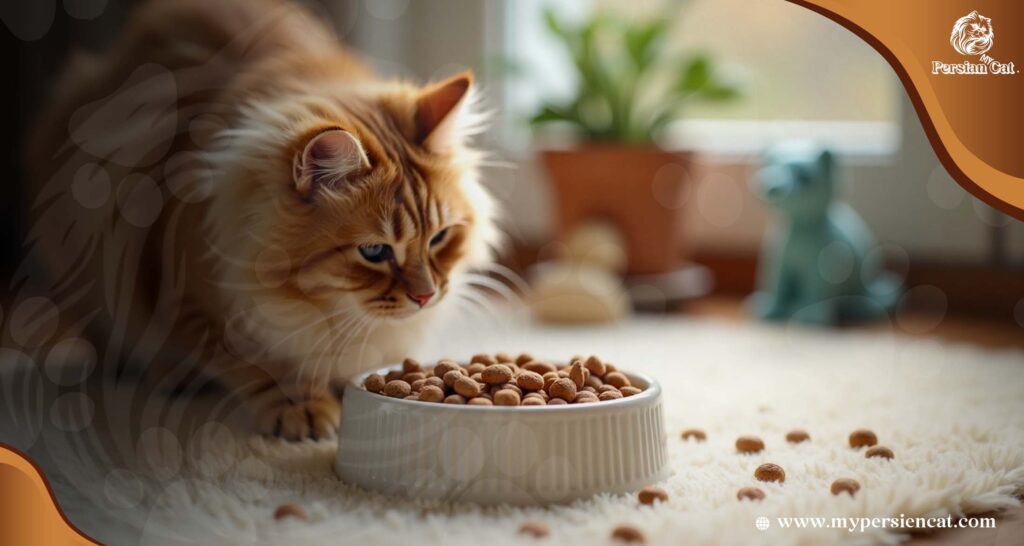
Bonus: Printable Shopping List for Persian Cat Food at Home
Making Persian cat food at home is easy when you have a clear list. I keep mine on the fridge. It saves time and makes shopping fast.
🐔 Basic Protein Choices
Pick fresh meat. It should be clean and safe. Try these:
- Chicken thigh (great for the ground chicken thigh with bone and organs recipe)
- Turkey breast (try the turkey breast and sweet potato recipe)
- Ground rabbit (raw ground rabbit recipe is lean and light)
- Chicken liver and heart (rich in iron and taurine)
- Eggs (good for homemade food for pregnant cats)
Tip: Switch meats now and then. It keeps meals fresh and full of good stuff.
🥕 Veggies and Extras
Use small amounts. Soft veggies help your cat’s tummy.
- Carrots (steam them well)
- Sweet potato (easy to mash)
- Pumpkin puree (helps with hairballs)
- Plain yogurt (good for digestion)
- Fish oil or sardine (great for coat health)
These are safe. They add flavor and help your cat feel good.
🧂 Supplement Suggestions
These fill the gaps in homemade meals.
- Premix powder (easy and full of key stuff)
- Taurine (vital for heart and eyes)
- Calcium (use eggshell or bone meal)
- Omega-3 oil (good for brain and skin)
- Cat-safe multi-vitamins
Many vet approved homemade cat food recipes need these. Even with a cooked meat recipe, they keep things safe.
This list helps you make homemade cat food with love and care. It covers the essential nutrients that should be a part of your cat’s diet. You’ll see the benefits of giving homemade food to your cat—a soft coat, clear eyes, and lots of purrs.
Print it. Use it. And enjoy every meal you make for your fluffy friend.
About The Author
Yasin Ahmed Tusher
I Have Five Years of Experience With Persian Cat
In that time, I have learned a lot about how to care for them. Persian cats have long, soft fur, so they need to be brushed often. I know how to brush and bathe them to keep their coats clean and smooth.
I also understand what they like to eat and how to keep them healthy. Persian cats are calm and loving. I enjoy spending time with them and making sure they feel happy and safe.
I can give them medicine if needed and watch for signs of illness. I know how to care for both kittens and older cats. Taking care of Persian cats is something I do with love and care every day.
Phone : 01978040328
Fax : 001978040328
Email : info@mypersiencat.com
Persian Cat Food at Home Persian Cat Food at Home Persian Cat Food at Home Persian Cat Food at Home Persian Cat Food at Home Persian Cat Food at Home Persian Cat Food at Home Persian Cat Food at Home Persian Cat Food at Home Persian Cat Food at Home Persian Cat Food at Home

